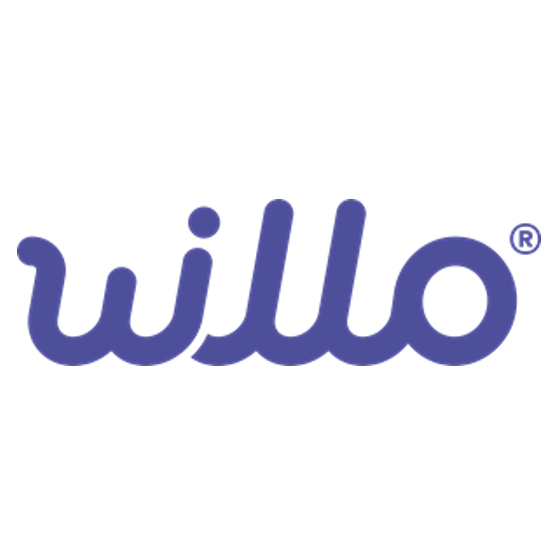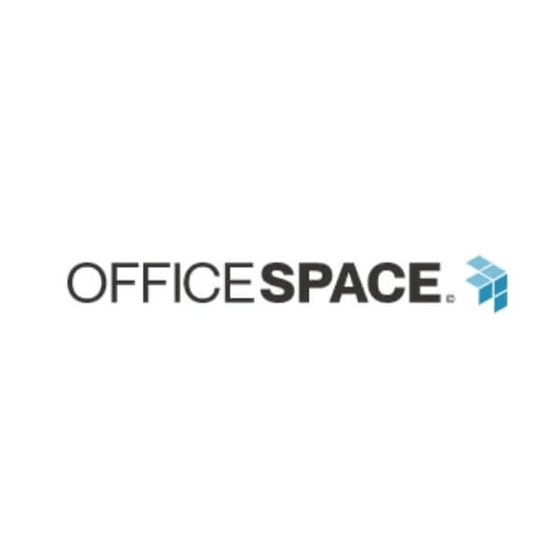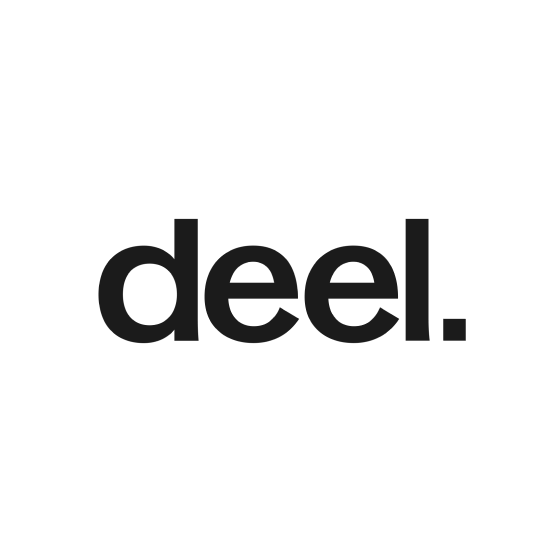10 Best Asset Management Software Shortlist
Here's my pick of the 10 best software from the 20 tools reviewed.
Get free help from our HR software advisors to find your match.
With so many different asset management software available, figuring out which is the right fit for your needs is tough. You know you want a system to help you track your tools, technology, and equipment more effectively, but you need to figure out which software is best. In this post, I'll help you make your choice easier by sharing my insights on the best asset management software to optimize your tracking and maintenance processes and reduce operational costs.
What is Asset Management Software?
Asset management software is a tool that helps organizations track, manage, control, and report on all types of company assets to improve operational efficiency and reduce costs. They use barcodes or other identification methods to tag items individually, ensure accurate inventory records, and maintain stock levels proactively. They assist with full lifecycle asset management, from acquisition to use, maintenance, and eventual disposal.
Using asset management software provides numerous operational benefits, including improved asset utilization, proactive maintenance schedules, enhanced data accuracy and inventory management, and increased visibility for mobile assets. They also help organizations reduce overhead costs by avoiding unnecessary purchases and proactively scheduling maintenance before items break down unexpectedly.
-

Rippling
Visit WebsiteThis is an aggregated rating for this tool including ratings from Crozdesk users and ratings from other sites.4.8 -

Willo
Visit WebsiteThis is an aggregated rating for this tool including ratings from Crozdesk users and ratings from other sites.4.8 -

edays
Visit WebsiteThis is an aggregated rating for this tool including ratings from Crozdesk users and ratings from other sites.4.3
Overviews of the 10 Best Asset Management Software Systems
Here’s a brief description of each asset management software system to showcase each tool’s best use case, and highlight their noteworthy features. I’ve also included screenshots to give you a snapshot of their user interface too.
OfficeSpace is a workplace operations platform built for managing physical assets, from IT hardware to office equipment. It gives you a centralized space to track, assign, and monitor workplace resources, with tools to support maintenance, reporting, and compliance needs.
I chose OfficeSpace because of how it helps IT, facilities, and operations teams maintain control over asset inventory and maintenance cycles. You can view asset locations, condition, and value in one place and set up automated work orders tied to warranties or preventive schedules. It also supports depreciation tracking and audit prep, which helps finance stay in sync with facilities.
The platform connects teams and data across departments—letting you break down silos and track assets throughout their lifecycle, from procurement to decommissioning. Plus, it works well for hybrid environments where teams split time between remote and in-office work.
Notable features include mobile support for field teams, dashboards for financial and operational reporting, recurring maintenance triggers, and audit logs for compliance. You can also allocate assets to people, teams, or spaces, and monitor total cost of ownership over time.
Integrations include Microsoft Teams, Google Workspace, Slack, Zoom, Workday, Okta, Active Directory, and kiosks or digital signage tools.
Deel is a comprehensive platform that combines HR, payroll, and global workforce management tools, making it an ideal choice for businesses operating across multiple countries. Its IT suite provides businesses with a unified platform to manage IT operations, enabling them to procure, deploy, track, and support equipment.
Deel IT excels as an asset management software by offering extensive features that cater to the needs of global businesses. It provides end-to-end equipment management, covering everything from sourcing and setup to ongoing maintenance, repairs, replacements, and returns. Additionally, its centralized device management system gives businesses real-time visibility and control over all IT assets.
What makes Deel IT particularly suited for global asset management in 130+ countries is its ability to automate and standardize IT processes across multiple locations. Companies can set up custom workflows for onboarding and offboarding, with pre-configured devices shipped directly to employees with all necessary apps, software, and security controls. Deel IT also offers flexible procurement options, rapid deployment of devices, and support for both owned and leased equipment, allowing businesses to manage their IT assets efficiently.
Integrations include Slack, Google Workspace, Microsoft Teams, BambooHR, Greenhouse, SAP SuccessFactors, Okta, and Azure Active Directory.
Asset management tool for software, hardware, SaaS subscriptions, and fixed assets
Freshservice is an ITAM (IT asset management) platform that was built to help organizations reduce IT costs and improve asset lifespan through proactively scheduled maintenance. You can manage all phases of the typical asset lifecycle, including procurement, discovery, utilization, maintenance, and retirement. Their analytics also assist with forecasting future IT costs too.
Their software doubles as a configuration management database (CMDB) and can be used to track any sort of IT-related asset, including software, hardware, and software-as-a-service (SaaS) subscriptions. Asset managers will also appreciate the ability to automate common processes to save their IT teams time. Other useful features that come with Freshservice include inventory and purchase order management modules, relationship mapping tools, and an automated asset discovery tool that catalogs all assets in your network at any given time.
Their mobile app also allows end-users to scan barcodes or QR codes to track non-IT, fixed assets too, making physical inventory management easy on any Android or iOS mobile device.
Freshservice integrates with Freshdesk, Freshbooks, Bomgar, CloudWatch, Dropbox, Jira, Google Suite, Microsoft Teams, Slack, Quickbooks, Zapier, Zoom, and other systems.
Pricing for Freshservice’s asset management service starts at $49/user/month. You can also request a 21-day free trial through their website.
Rippling is an HR software provider with additional expertise in device and inventory management and app and identity management arenas. Their IT Cloud works in tandem with their HR Cloud, simplifying the process of designating assets like computer hardware and software to new employees during their onboarding process, or similarly deactivating them if and when employees leave the company.
Rippling simplifies the IT asset management process by allowing you to purchase computer equipment through Rippling and provision the device with all necessary apps. You can also enable single sign-on, enforce security policies, and update all relevant user groups. Additional features within their platform include a device threat detection function, a remote lock and wipe feature, multi-factor authentication, and a team password management function.
Rippling’s IT Cloud integrates with password management programs like 1Password, LastPass, Dashlane Business, and Keeper, with compliance platforms like Drata, Laika, Secureframe, Tugboat Logic, Vanta, and VGS Control, and with other security platforms.
Pricing for Rippling starts at $8/user/month. You can also request a free quote and a free demo through their website.
New Product Updates from Rippling IT
Assign Identity Providers by Team with Rippling IT
Rippling IT now allows assigning specific identity providers like Okta and Entra ID to different teams, with Rippling’s SSO as a backup for instant rollbacks. More details at Rippling Blog.
InvGate Asset Management is a comprehensive IT asset management platform that helps organizations monitor, organize, and maintain control over their hardware, software, and cloud-based assets. It provides a centralized dashboard that offers complete visibility into your asset inventory, supporting smarter decisions and improved asset governance.
This platform stands out for its flexible onboarding options, which include agent-based setups, agentless network scans, manual asset entry, and integration with external systems like Lansweeper and FileWave. It streamlines the entire asset lifecycle—from acquisition through disposal—while leveraging automation to apply asset policies and organize items. You can also customize asset records with fields tailored to your business needs, such as tracking usage, procurement data, or compliance statuses.
Other features include a configuration management database (CMDB) that visually represents asset relationships, helping teams understand how systems interact and depend on one another. InvGate also automates recurring asset management tasks through customizable rules, reducing time spent on manual work. Additionally, its inventory creation methods—from agent installations to third-party syncs—ensure compatibility with different organizational workflows.
Integrations with tools like Lansweeper, FileWave, Microsoft Active Directory, and Okta streamline onboarding by automatically importing existing asset data.
Issuetrak is a ticketing software designed to assist businesses in managing issues, tickets, or cases across various channels such as email, webforms, and direct application submissions.
I chose Issuetrak for asset management software due to its robust set of features that cater to omnichannel support management, which is essential for modern businesses that interact with customers across various platforms. What makes Issuetrak different is its versatility in managing help desk tickets, customer support requests, and complaints across diverse industries, regardless of the company size.
The platform provides a robust ticketing system that enables omnichannel ticket submission, ensuring that customer issues are captured in a centralized system no matter how they are reported. The platform includes a feature-rich Issue Hub for organizing and prioritizing tickets, and automated Round Robin Issue Assignment to distribute workload evenly among team members.
Issuetrak offers integrations with a variety of systems and platforms to enhance its issue tracking and management capabilities. Key integrations include Microsoft 365, Google Analytics, Gmail, Salesforce, Power BI, and thousands more through Zapier. You can also access the Issuetrak API for even more connections.
Asset management solution for physical equipment, including maintenance requests and work orders
MaintainX is an equipment and asset management software system with a strong focus on tracking the operating status of physical assets and equipment. You can use their software to determine which equipment is active or inactive, track time between equipment failures, or create work orders for maintenance.
To reduce your overall downtime, they have a preventive maintenance autopilot feature that automatically schedules equipment servicing proactively, before you experience a breakdown. Users will also appreciate MaintainX’s detailed metrics, which cover everything from asset locations to maintenance records, and work history to time vs. cost reports.
MaintainX integrates with enterprise resource planning (ERP) systems like Infor, Microsoft Dynamics 365, Oracle and SAP, with data management programs like MachineMetrics, Tableau and Zapier, and other popular accounting and fleet management tools.
Pricing for MaintainX starts at $8.33/user/month. You can also request a free trial or free demo through their website. In addition, they have a basic freemium plan with limited features for small teams.
Limble
Scalable asset management platform for automated preventative maintenance
Limble is a CMMS and asset management platform designed to support businesses and industries of all scales, with a focus on reducing downtime, improving productivity, and ensuring compliance with industry regulations.
Its asset management capabilities include functionalities such as preventive maintenance, work orders, advanced reporting, parts inventory, downtime tracking, and workflow automation. I especially like that it allows you to track assets associated with different work orders, vendors, parts, and even preventative maintenance tasks.
Furthermore, it offers the ability to automate preventive maintenance scheduling. Users can create preventive maintenance (PM) templates, add standard operating procedures (SOPs) and checklists, and optimize PM schedules based on asset history. This helps in reducing unexpected breakdowns and extending the life of assets.
Limble offers a free plan with essential features. Paid plans begin at $28/user/month.
Affordable asset tracking software that allows for unlimited users, well-suited for small business.
EZOfficeInventory is a web-based asset management platform that helps with equipment management, reservations, inventory stock assessments, and depreciation, calibration and tool management. Their software solution includes check in/out features, an asset availability calendar, and the ability to classify items into groups and sub-groups for better ease of use.
Their mobile apps for Android and iOS devices allow users to scan inventory barcodes, QR codes or RFID tags from any location, or you can use third-party label scanners too.
EZOfficeInventory integrates with Centrify, Dropbox, Google Suite, Jira Service Desk, Okta, OneDrive, OneLogin, PingIdentity, Zendesk, and Zendesk Sunshine. They also have an API that can support other custom software integrations too.
Pricing for EZOfficeInventory starts at $35/month for 250 assets and unlimited users. You can also request a 15-day free trial through their website.
Asset Panda
Versatile asset tracking software with a wide range of use cases
Asset Panda is a flexible and versatile asset management system that works for any type of asset tracking, including fixed assets, IT assets, tool tracking, maintenance tracking, leased equipment, and reservations. Their system is used across a range of industries including government, healthcare, construction, education, and non-profit.
You can easily shape the software to meet your unique needs using their unlimited fields and configuration options. Their application also supports role-based permissions, giving you control over who can perform specific tasks within the system, or access sensitive data.
Advanced features within Asset Panda include asset kitting (bundling related equipment together to save time), a barcode generator (using custom barcodes or QR codes), and full asset lifecycle history (including repair tracking and forecasting). You can also attach supporting material to asset records, including photos, user manuals, or warranty documents. This helpful feature leads to faster troubleshooting and less reliance on paper documents with everything digitized in your system.
Another feature I appreciate is the ROI calculator available on their website. If you’re on the fence on whether you need asset tracking software or not, plug your numbers into their calculator to get a sense of how much money you could save per year.
Asset Panda integrates with Azure Active Directory, Lansweeper, Jira Service Management, Google Workspace, Meraki, Microsoft Active Directory, Microsoft Intune, Okta, OneLogin, Servicenow, Zendesk and other systems.
Asset Panda offers scalable pricing upon request, based on the number of assets you want to track. You can also request a free demo and a free quote through their website.
The 10 Best Asset Management Software Systems Summary
| Tool | Best For | Trial Info | Price | ||
|---|---|---|---|---|---|
| 1 | Best for hybrid asset lifecycle tracking | Free demo available | Pricing upon request | Website | |
| 2 | Best for global asset management in 130+ countries | Free trial + demo available | From $29/month | Website | |
| 3 | Asset management tool for software, hardware, SaaS subscriptions, and fixed assets | 14-day free trial + free demo available | From $19/user/month (billed annually) | Website | |
| 4 | IT software that simplifies device and app management | Free trial available | From $8/user/month (billed annually) | Website | |
| 5 | Best for simplifying IT asset onboarding | Free trial available | From $0.21/node/month | Website | |
| 6 | Best for omnichannel support management | Free trial + free demo available | From $27/user/month | Website | |
| 7 | Asset management solution for physical equipment, including maintenance requests and work orders | Free trial or free demo through their website | From $8.33/user/month | Website | |
| 8 | Scalable asset management platform for automated preventative maintenance | Free plan available | From $28/user/month | Website | |
| 9 | Affordable asset tracking software that allows for unlimited users, well-suited for small business. | 15-day free trial | From $35/month (billed annually) | Website | |
| 10 | Versatile asset tracking software with a wide range of use cases | 14-day free trial | From $1,500/month (billed annually) | Website |
Other Options
Here are a few more options that didn’t make the best asset management software list:
- Asset infinity
Fixed asset management software that tracks the full asset lifecycle from purchase to disposal
- AssetTiger
User-friendly asset management system with a mobile app for inventory scanning and check in/out
- ManageEngine Mobile Device Manager Plus
For managing your corporate mobile devices at scale
- HxGN EAM
Enterprise asset management tool designed to improve productivity and extend asset lifecycles through prescriptive maintenance
- AssetCloud
Flexible asset management software with efficient tools for managing identical items
- MediaValet
With AI-powered categorization and search tools
- 4ALLPORTAL
Enterprise asset management with advanced search capabilities, including OCR text recognition
- ServiceNow
End-to-end IT asset management for the full asset lifecycle for hardware, software, and cloud-based subscriptions.
- NinjaOne
Modern IT asset management software including IT service help desk capabilities like patching.
- Fiix
Physical asset maintenance management software that tracks repair histories, maintenance costs, parts consumption, and equipment hierarchies.
Comparison Criteria
Wondering how I selected the best asset management software for this list? Here’s a summary of my evaluation criteria:
- User Interface (UI): I selected systems that have user-friendly interfaces with a gentle learning curve that won’t overcomplicate things.
- Usability: I choose systems that work across different operating systems, with mobile apps for any sort of device to make information accessible from anywhere.
- Software Integrations: I picked systems that offer integrations with other related software systems, such as enterprise resource planning (ERP) software and business intelligence platforms.
- Value for Price: I always prefer software with transparent pricing. Most of the software platforms in this list do provide baseline pricing, but some systems are modular in design, and only provide customized pricing based on the volume of assets you need to track.
Asset Management Software: Key Features
Here’s a summary of the main features you can expect to find within the best asset management software:
- Asset tagging & tracking: Individual item tagging using a combination of tracking methods, including barcodes, QR codes, bluetooth tracking, RFID (radio-frequency identification) and NFC (near field communication) tracking. Each asset is assigned a unique identifier using one of these methods, and has a corresponding entry in your inventory database.
- Asset lifecycle history: A comprehensive record of an asset’s lifespan covering procurement, installation, ongoing usage and maintenance, location transfers, lease or warranty information, and eventually decommissioning and disposal.
- Real-time inventory reporting: Once you’ve populated your system with all your inventory and assets, you can sit back and let the system summarize asset data updates for you as items are moved around between your employees.
- Maintenance module: An integrated solution for tracking and scheduling maintenance activities and work orders, often proactively or preventatively rather than only once something breaks down. Some systems can automatically schedule maintenance based on previous asset performance history.
- Role-based permissions: The ability to set permissions for individual users or groups of users, and reserve high-level system functions for key members only to maintain control over who can access sensitive information or run financial reports.
- Notifications and alerts: These are customizable system flags that you can set up, as needed, to notify key stakeholders of certain actions, such as maintenance requests, low stock levels, or items due for replacement.
- Mobile-friendly features: Since nearly everyone owns a smartphone these days, it’s crucial that asset management software is mobile accessible. Most software systems have mobile apps that transform mobile devices into digital scanners, enabling easy check-in and check-out of your assets from anywhere. This is a really important feature as you don’t want to get stuck with a system that only works with proprietary scanning technology, as that will only lead to higher implementation costs.
- Financial reporting tools: Depreciation is a normal part of the asset lifecycle and needs to be considered in order to aid proper forecasting efforts. The best systems include flexible depreciation modules, and other financial tools to help you determine where to draw the line between repairing equipment or replacing it entirely.
Are There Different Types of Asset Management Software?
Every organization will have their own unique needs when it comes to tracking their business assets. The best asset management software is flexible enough to accommodate multiple styles of asset tracking. However, depending on your industry or business set up, you may benefit from a specific type of asset management software.
Here are a few common niches when it comes to asset tracking software:
- Physical assets (also known as fixed assets): These are long-term, tangible assets that won’t be consumed immediately (e.g., company equipment, furniture, etc.).
- IT assets: This includes both physical computer equipment (e.g., hardware like computers, printers, scanners), and other less tangible assets (e.g., software licenses and subscriptions). Sometimes these specialty asset trackers are referred to as IT asset management software or ITAM software.
- Digital assets: Digital assets could be considered a sub-type of IT assets, but it can also relate to digital inventory, such as digital files, photos, fonts or other items that exist in the digital landscape only. This type of specialty software is often described as digital asset management software or DAM software.
- Enterprise-level assets: This involves asset management at a larger scale, including fixed assets like industrial equipment, fleets of vehicles or boats, facilities or operational plants, and other infrastructure. Software geared for this specific purpose is often referred to as enterprise asset management software or EAM software.
What are the Main Benefits of Asset Management Software?
It never hurts to arm yourself with information. Asset management software will consolidate your inventory, maintenance and other data into one place, making it easier to analyze and track over time.
Here are some of the main benefits you can expect to gain from using this type of asset tracking software:
- You’ll gain data to drive effective decision-making. Having consolidated data makes it easier to spot any trends.
- You can monitor the cost of owning assets over time and decide if it’s better to lease, outsource, or repair and replace items.
- You can maintain compliance through proper record-keeping for tax purposes.
- You’ll save your teams a lot of manual data entry, reducing administrative burden and saving your company time and money.
- Over time, you’ll be able to optimize your maintenance programs to minimize repair expenses and maximize your asset’s lifespan.
- With data at your fingertips, it will ensure smooth internal and external audits of asset-related information.
What Do You Think About This List?
I hope this summary of the best asset management software helped you get one step closer to finding the right software for your business.
If the tools above don’t feel like the right fit, I recommend popping over to our Crozdesk website, where you can dive deeper into 300+ software categories and compare your top choices side-by-side.
I also encourage you to subscribe to our free People Managing People newsletter. By joining us for our weekly update, you’ll gain access to our latest content covering a whole range of HR-related topics, including trending topics, podcasts, and more tool recommendations.

























